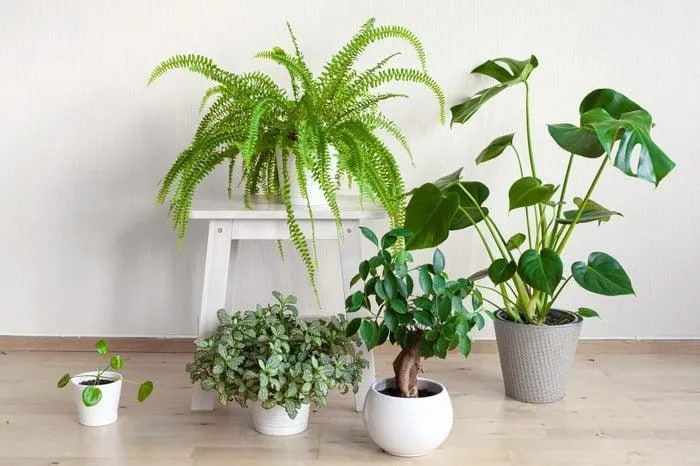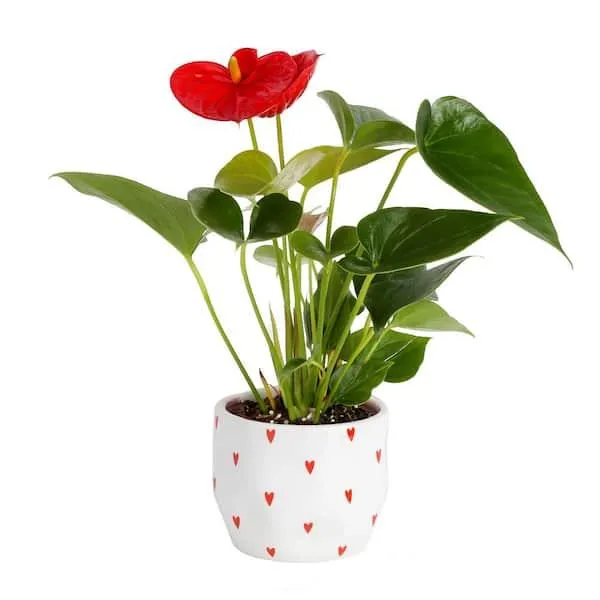Plants You Can Grow Without Direct Sunlight
If you don’t get much natural light in your home or office, you may be wondering which plants you can keep alive without direct sun exposure. From my experience living in apartments with limited windows, there are definitely options for bringing a bit of green into shaded spaces. In this article, I’ll cover some of the top plants that thrive in low-light conditions, along with care tips to help them flourish regardless of the sunlight situation.
Snake Plants / Mother-in-Law’s Tongue
One of the most bulletproof plants for low light is the snake plant, which goes by many names including mother-in-law’s tongue. These tall grass-like plants with stiff, striped leaves can survive weeks with only artificial light. Even better, they’re virtually impossible to overwater, so they’re great for beginners. I keep a snake plant in my bathroom that gets almost no direct sun, yet it’s been growing happily for years now. Just water it when the soil is dry and give it as much light as you can.
Pothos
Another top choice is the easygoing pothos vine. Its heart-shaped leaves come in various color patterns like golden, marble queen, and neon. Pothos is extremely tolerant of neglect – I’ve seen them doing fine in near darkness. You can let the soil dry out between waterings. And they clean the air by removing toxins like formaldehyde, which is kind of cool. Just give pothos a bright spot and occasional pruning to keep it bushy.
Peace Lilies
For something with pretty blooms, consider a peace lily. Its white flowers that rise above the dark green leaves really make a statement. Peace lilies signal when they need water by drooping their leaves, so they’re simple to care for. They prefer moisture but can handle drying out for short periods. You’ll get the best flowering display if you give a peace lily higher light, but it’ll still look nice in medium light. I keep one on my kitchen counter.
Chinese Evergreen
These tropical-looking plants come in an awesome variety of leaf shapes and colors like burgundy, green, or variegated. They aren’t true evergreens, but Chinese evergreen leaves can last for a year or more, basically making them evergreen. They grow slowly without direct sun. Be careful not to overwater, as their rhizomes rot easily. Give them humidity if you can by grouping plants together or using pebble trays. I found Chinese evergreens to be very visually appealing plants.

Cast Iron Plant
As the name implies, cast iron plant is virtually indestructible. I’ve seen people neglect them for months with no visible effect. Their dark green leaves have a nice texture. Cast iron plants thrive on neglect and tolerate low humidity and light levels well. Water only when the soil is dry. They make an excellent choice if you’re forgetful about watering plants. You can put one anywhere and not have to babysit it. Talk about tough!
English Ivy
If you want a trailing vine to hang from shelves, try English ivy. It thrives in very shaded areas and is practically a weed. Just don’t plant it outside unless you’re cool with it taking over everything! It removes formaldehyde, benzene, and other indoor air pollutants. You can let soil dry out between waterings. Prune it occasionally to keep it bushy. Although its leaves aren’t evergreen, English ivy stays green all year. Its vining habit works well as a hanging plant too.
Philodendron
With its heart-shaped leaves in shades of green and cream, philodendron gives a jungle vibe indoors. It grows quickly in low light. You can let the soil dry out before watering again. Philodendron does especially well mounted on logs or poles to climb. It also removes benzene, formaldehyde and other toxins. From my experience, it’s not too fussy about humidity either. An added bonus is the velcro-like adhesive pads on its stems – they’re so cool!
Zz Plant
This one’s got such an awesome name, it deserves a spot on the list. The ZZ plant is next to impossible to kill. I’ve literally forgotten to water mine for a month with no consequences. Its waxy dark green leaves stand upright like blades of grass. It prefers to dry out between waterings. Grow it for its striking look since it doesn’t flower. Place one where you want a touch of the exotic. ZZ plants just don’t care – they’ll grow pretty much anywhere.
Spider Plant
Renowned for their habit of sprouting plantlets from stems, spider plants add visually interest to low-light spots. You can break off the smaller pups and plant them to propagate more. Their strappy green leaves have a neat spotted pattern. They accept neglect pretty well and remove indoor toxins. Just be careful not to overwater spider plants. The plantlets are like little free extras for your effort! Give one a try if you’ve got sparse light.

Chinese Money Plant
This funky plant bears round, stacked leaves like coins that resemble a stack of money. Pretty hilarious, right? They remove benzene and formaldehyde from the air too. The interesting foliage makes them a conversation piece. Just don’t overwater them basal Rot is a risk if you’re not careful about drainage. Give them bright indirect light for their best looks. Money trees do well with mild neglect from my experience.
Heartleaf Philodendron
As an additional philodendron option, the heartleaf type has ruffled, velvety leaves in various shades. These beauties clean the air and thrive in low humidity. Like pothos, you can let their soil dry out between waterings. Heartleaf philodendrons grow quickly whether hanging or standing. Prune them occasionally for a bushier shape. They’ll reward you with fresh new leaves constantly without much care needed. Overall this plant provides great bang for your buck.
Dracaena
With their slender trunks and fans of leaves, dracaenas look quite tropical despite tolerating low light well. The ‘Massangeana’ type has narrow leaves striped yellow. Water only when soil is dry. Dracaena tolerates low humidity too for the tropic mood it conveys. It even tolerates pollution and does well in offices. You get the cool look with minimal fuss. Just give it indirect sunlight near a window. This plant has endured a century of home and office decor!
Tips for Growing Low-Light Plants
While the above choices thrive with minimal sun, you can boost their growth and functionality with some care strategies:
- Use grow lights. For the fullest foliage, supplement natural light with cheap LED shop lights a few hours daily. It works wonders!
- Group plants together. Clustering pots raises humidity around them for better health.
- Water properly. Let soil dry out before watering, and check moisture levels with a meter to avoid over-watering.
- Fertilize in spring and summer. Use diluted liquid fertilizer every few months for vigorous growth.
- Prune periodically. This encourages bushy, full growth and removes any leggy parts.
- Repot only when roots fill the pot. Overpotting leads to soggy soil issues faster.
- Dust leaves occasionally. This boosts photosynthesis and keeps plants looking fresh.
With the right plant choices and care, you can definitely bring the outdoors in even without direct sunlight. Following these tips should help your shade plants thrive for years to come. Just don’t be afraid to experiment and see what does best your space. Indoor greenery is worth the effort, even if the sun’s a little sparse.

Frequently Asked Questions
Here are some additional tips for common questions folks have when choosing low-light plants:
How do I keep plants alive in a windowless bathroom?
Snake plants, pothos and peace lilies do especially well in humid bathrooms. Run
Plants That Can Survive With Little To No Sunlight
| Plant | Light Requirements | Care Tips |
|---|---|---|
| Pothos | Low light to bright, indirect sunlight | Water when top inch of soil is dry. Thrives with neglect. |
| Snake plant | Low light. Tolerates low light for long periods. | Water infrequently. Likes dry soil between waterings. |
| Chinese evergreen | Low, indirect sunlight. Tolerates low light well. | Keep soil moist. Fertilize monthly in spring and summer. |
| Peace lily | Low, indirect sunlight. Tolerates low light conditions. | Keep soil moist. Likes high humidity. |
| ZZ plant | Low, indirect sunlight. Tolerates very low light. | Let top inch of soil dry between waterings. |
FAQ
-
What kind of plants can grow without direct sunlight?
Plants such as english ivy, many ferns, philodendron and pothos are able to grow well in very low light conditions like under trees or indoors near a north-facing window. These plants are adapted to live in shaded forest understories.
-
Will a spider plant thrive without sunlight?
Spider plants can survive for a long time without any direct sunlight. They only need medium light to stay alive. However, they will not produce baby spider plants or look as healthy without being exposed to some sunlight each day, even if it’s not a lot. So they can live without sun, but won’t totally thrive.
-
Can a snake plant live in total darkness?
No, a snake plant cannot survive for very long without any light at all. They are able to tolerate very low light better than most other houseplants. But total darkness is just like placing the plant in the refrigerator – it will eventually die without any sunlight or artificial light. They need at least some minimal light each day.

-
What are the best indoor plants for low lighting?
Some plants that do amazingly well in low light include pothos, Chinese evergreen, snake plant, ZZ plant, peace lily, spider plant and English ivy. These plants have thick green leaves that don’t require lots of direct sun. They can basically survive off the small amounts of light indoors.
-
Can an aloe vera plant live without sunlight?
An aloe vera can live without direct sunlight, but it needs at least partial sunshine each day to stay healthy long-term. It will survive in very low light for extended periods, but the leaves may become thin and stretched out trying to reach what little light exists. To prevent etiolation, aloe needs a bright spot with some direct or indirect natural light for a few hours daily.
-
What are some tricks to help low-light plants survive?
For plants stuck in darker spots, rotating them weekly helps all sides access the sun equally. Using a grow light several hours a day provides a boost. Also, talking and playing music to low-light plants might help boost their spirits! Fertilizing only during the growing season conserves energy. Pruning away any gangly or leggy growth focuses what the plant has into leafier, fuller growth.
